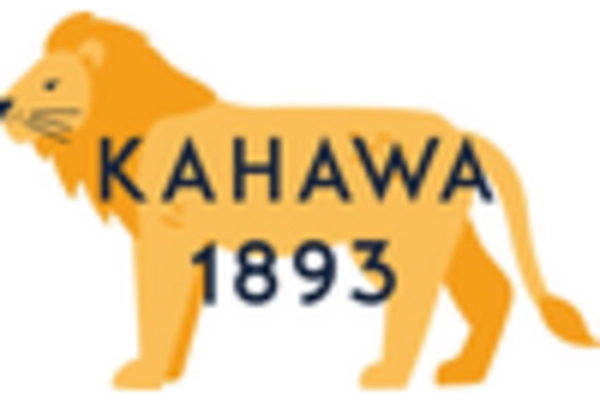Expansion of Retail Channels
The shea butter market is benefiting from the expansion of retail channels, particularly in the context of health and beauty products. Traditional brick-and-mortar stores are increasingly complemented by online platforms, allowing consumers greater access to shea butter products. This shift is particularly relevant as e-commerce sales in the beauty sector have been growing at a rate of 20% annually. Retailers are also focusing on creating dedicated sections for natural and organic products, which enhances the visibility of shea butter offerings. This expansion in retail channels is likely to drive sales and increase market penetration, positioning the shea butter market for sustained growth in the coming years.
Increased Use in Food Products
The shea butter market is witnessing a diversification of applications, particularly in the food sector. Shea butter is increasingly being utilized as a substitute for traditional fats in various culinary applications, including baking and cooking. This trend is driven by the rising demand for healthier alternatives to conventional fats, as consumers become more aware of dietary choices. The food industry has reported a growth rate of around 8% for shea butter usage in food products, indicating a promising avenue for expansion within the shea butter market. This shift not only enhances the market's versatility but also opens new channels for revenue generation.
Rising Popularity of Clean Beauty
The clean beauty movement is significantly influencing the shea butter market, as consumers increasingly seek products free from harmful chemicals and synthetic additives. Shea butter, being a natural and versatile ingredient, aligns perfectly with this trend. Brands that incorporate shea butter into their formulations are likely to attract a growing segment of consumers who prioritize transparency and ingredient integrity. The clean beauty sector has been projected to grow at a CAGR of 10% over the next five years, suggesting that the shea butter market could see substantial growth as more companies embrace clean formulations that highlight shea butter as a key ingredient.
Innovation in Product Formulations
Innovation plays a crucial role in the shea butter market, as manufacturers continuously develop new formulations that enhance the efficacy and appeal of shea butter products. This includes the incorporation of complementary natural ingredients, advanced extraction techniques, and unique delivery systems that improve product performance. The trend towards innovative formulations is likely to attract a broader consumer base, including those seeking multifunctional products. As the market evolves, it is anticipated that the shea butter market will see an increase in product launches, with a projected growth rate of 12% in new product introductions over the next few years, reflecting the dynamic nature of consumer preferences.
Growing Awareness of Health Benefits
The shea butter market is experiencing a notable increase in consumer awareness regarding the health benefits associated with shea butter. This natural ingredient is recognized for its moisturizing properties, anti-inflammatory effects, and potential to improve skin elasticity. As consumers become more health-conscious, they are gravitating towards products that contain shea butter, particularly in skincare and cosmetics. According to recent data, the demand for shea butter-infused products has surged by approximately 15% annually in the US. This trend indicates a shift towards natural and organic ingredients, which is likely to bolster the shea butter market as brands adapt their offerings to meet consumer preferences.

















Leave a Comment